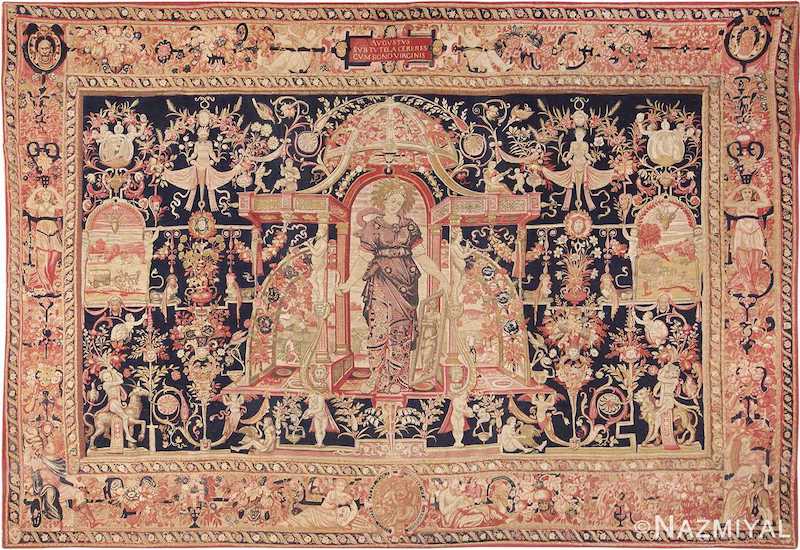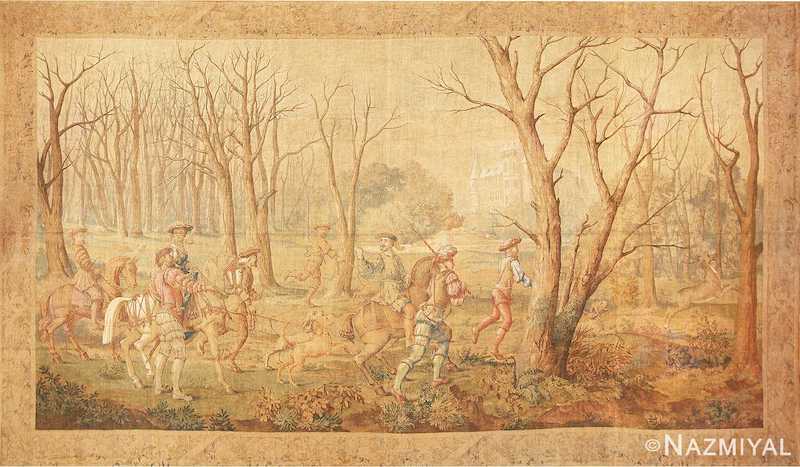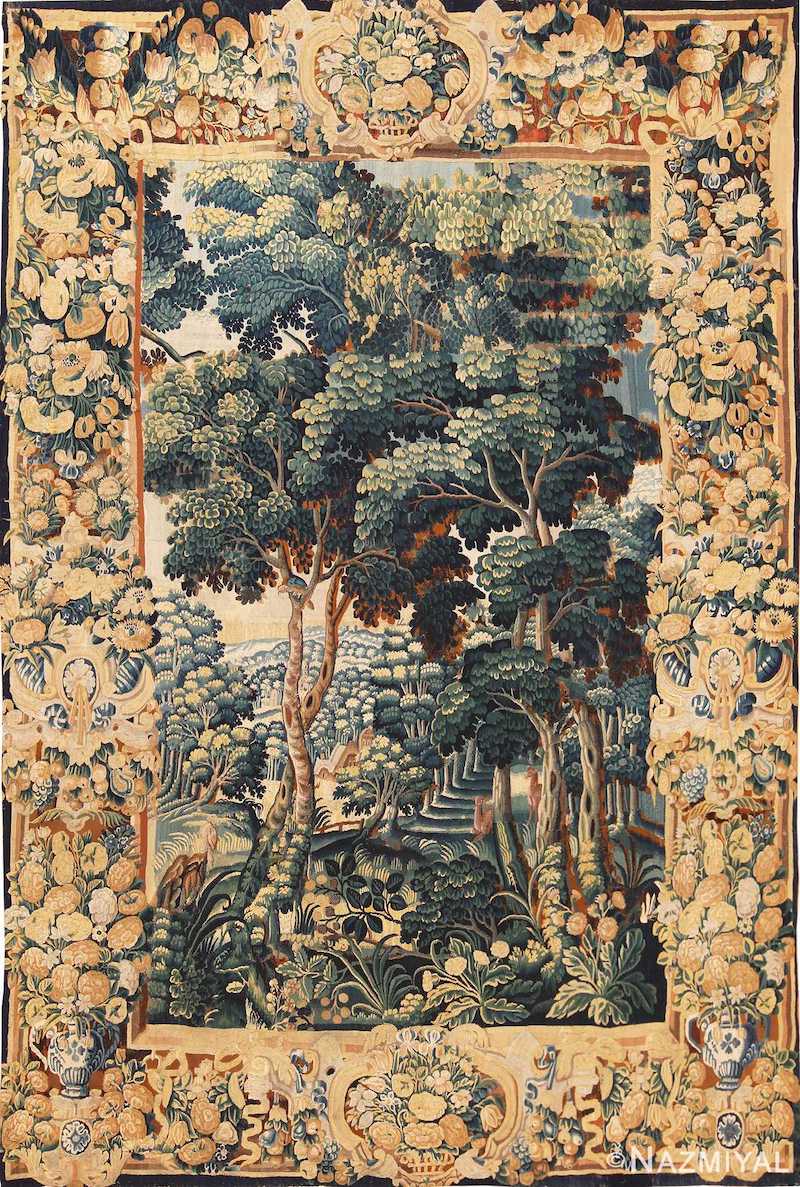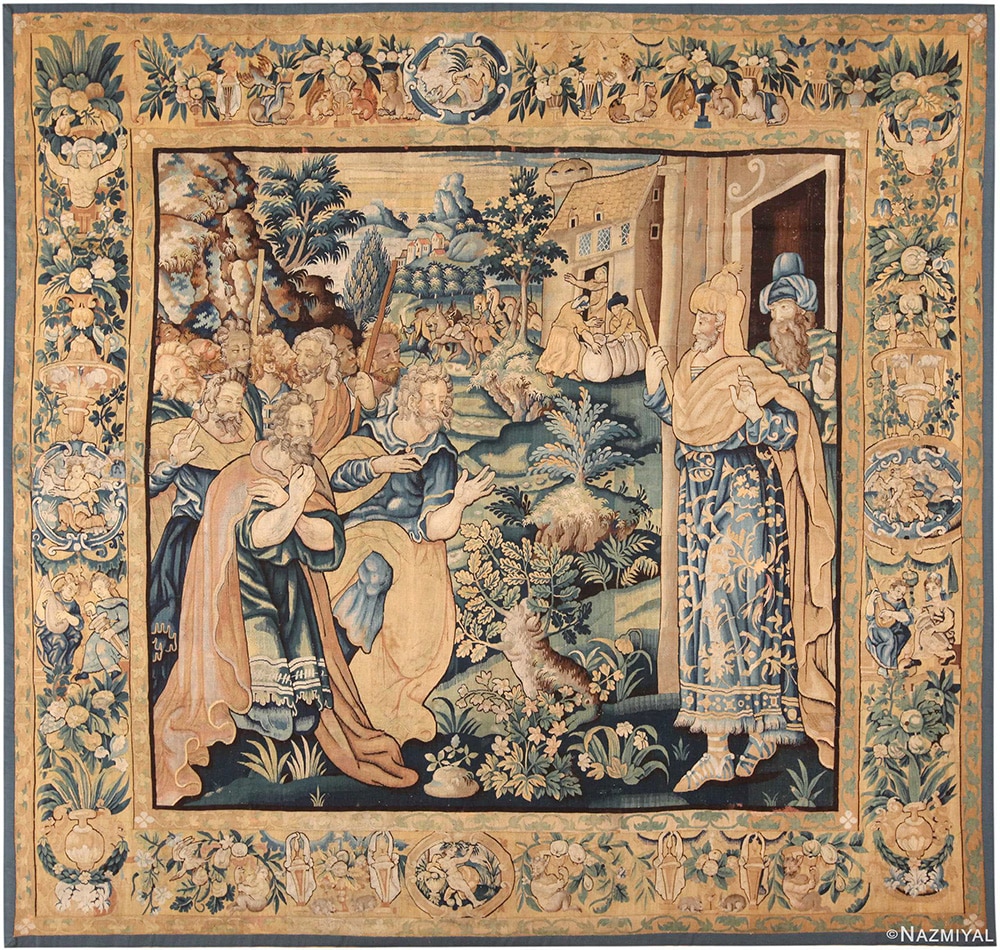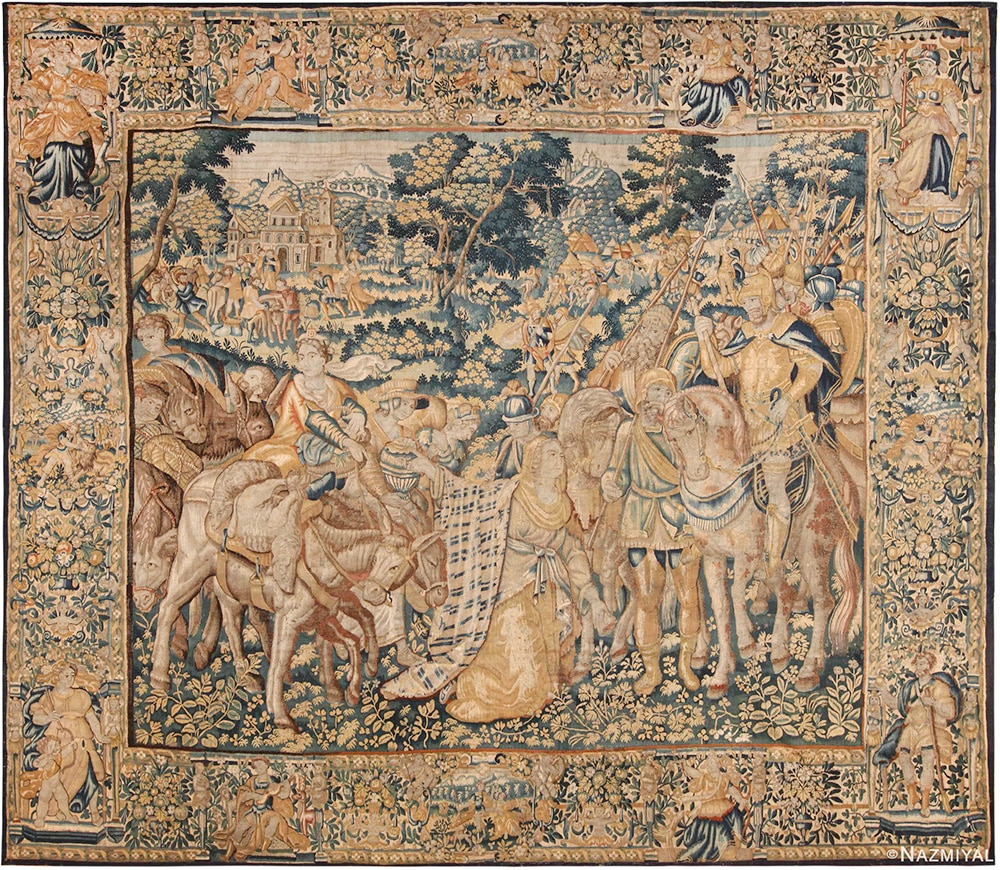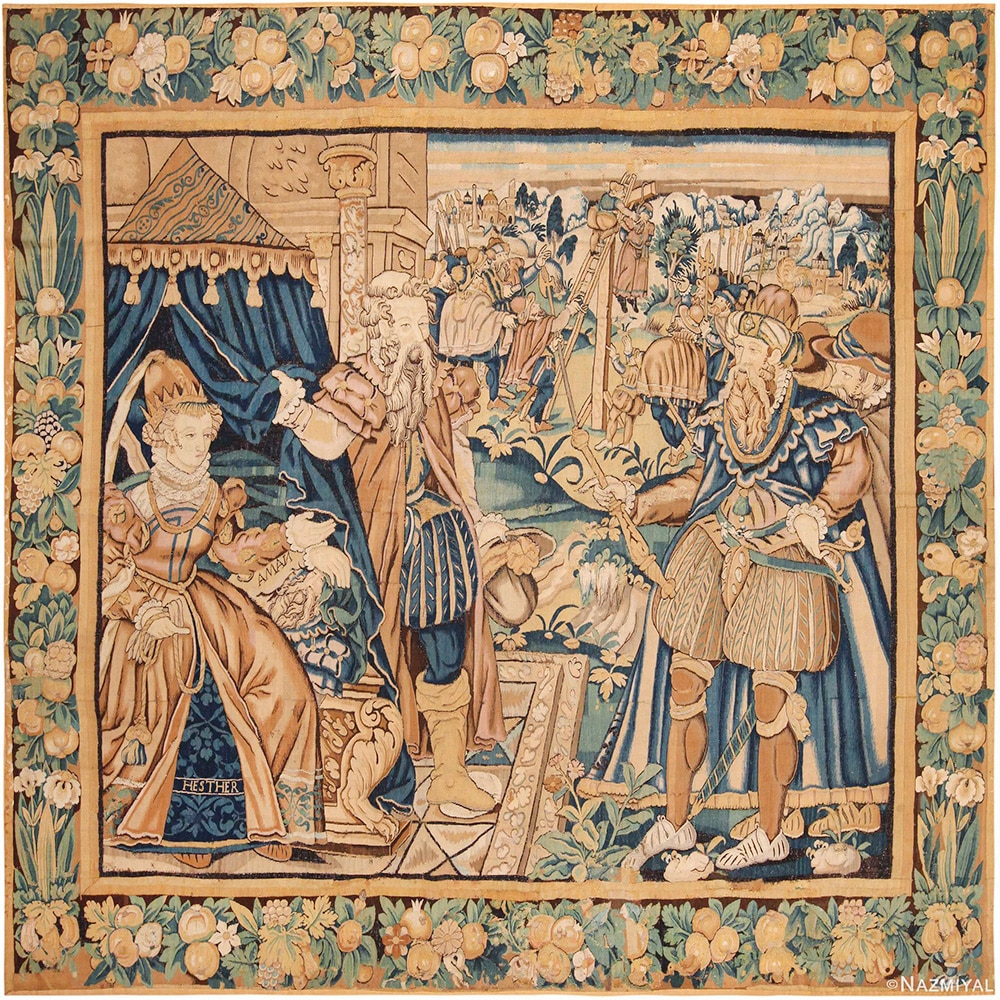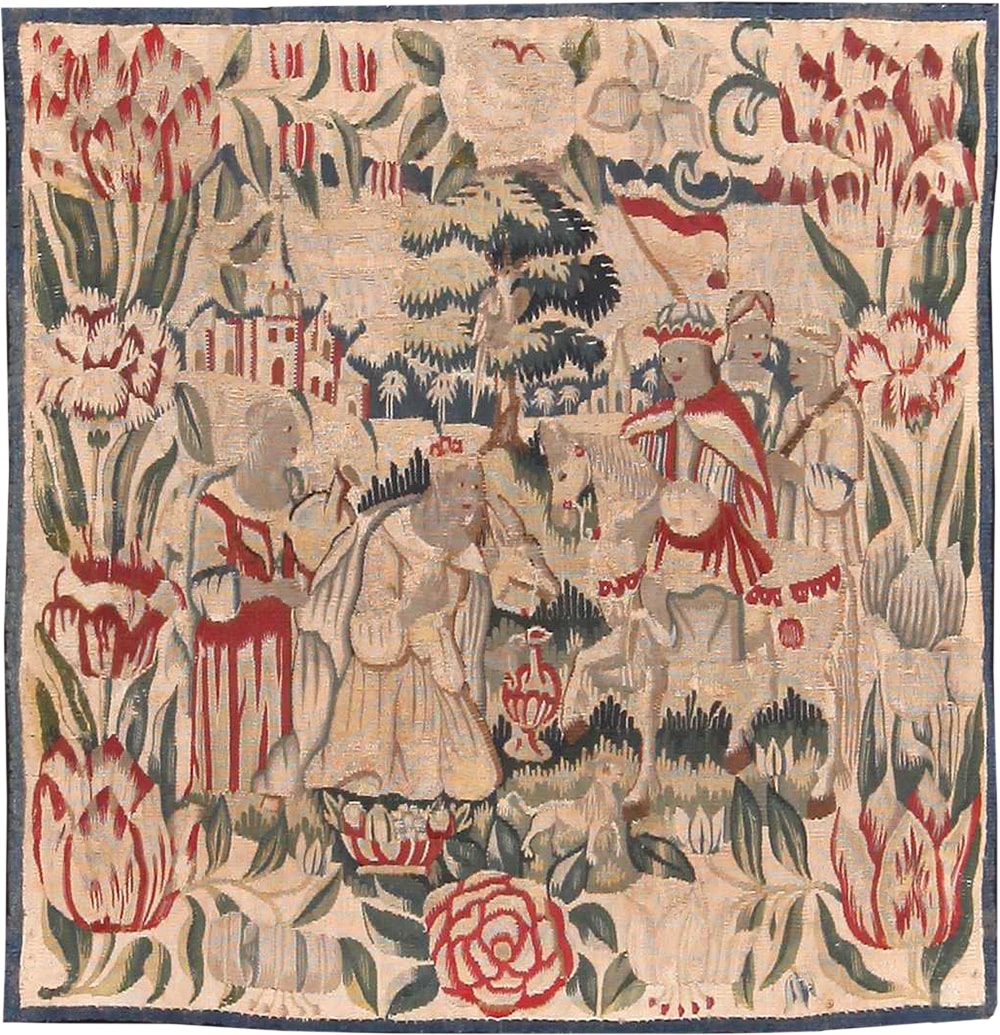Beauvais Tapestries and the Beauvais Manufactory
The gorgeous and opulent tapestries known as the Beauvais tapestries were woven at the Beauvais manufactory in the 17th and 18th centuries. Often considered the second most important tapestry manufactory in France after the Gobelin tapestry manufactory, the Beauvais tapestries were made for nobility and the wealthy bourgeoisie. Let’s take a closer look at the history and development of this iconic manufactory.
What are Beauvais Tapestries?
Beauvais Tapestries are a renowned type of tapestry produced by the Beauvais Tapestry Manufactory, which was established in Beauvais, France, in the late 17th century. The manufactory is known for its high-quality woven tapestries that feature intricate designs and rich colors.
Here are some key characteristics and historical information about Beauvais Tapestries:
- Origins: The Beauvais Tapestry Manufactory was founded in 1664 by Jean-Baptiste Colbert, the Minister of Finances under King Louis XIV of France. It was established to compete with the prestigious Gobelins Tapestry Manufactory in Paris.
- Design Style: Beauvais Tapestries often display scenes from mythology, history, pastoral landscapes, and intricate floral motifs. They are known for their delicate and detailed designs, which are influenced by the prevailing artistic styles of their time, such as Rococo and Neoclassicism.
- Weaving Technique: Beauvais Tapestries are woven using the “low-warp” or “basse-lisse” technique. This technique involves stretching the warp vertically and weaving the weft horizontally, resulting in a flatter and less textured surface compared to other tapestry techniques.
- Collaboration with Artists: The Beauvais Tapestry Manufactory collaborated with renowned artists and designers of the time to create their tapestry designs. Notable artists associated with Beauvais include François Boucher, Jean-Baptiste Oudry, and Jean-Baptiste Huet.
- Vibrant Colors: Beauvais Tapestries are known for their vibrant and rich color palettes. They often feature a wide range of colors, including soft pastels and bold hues, which contribute to the visual appeal and overall impact of the tapestries.
- Versatility: Unlike some other tapestry workshops that focused primarily on large-scale wall hangings, Beauvais also produced smaller tapestries for upholstery, furniture coverings, and decorative elements like seat cushions and panels. This versatility allowed their tapestries to be used in a variety of interior design applications.
- Historical Significance: The Beauvais Tapestry Manufactory played a significant role in the history of French tapestry production. Although it faced financial challenges and periods of decline, it managed to survive and adapt to changing artistic tastes. It continued to produce tapestries throughout the 18th and 19th centuries, contributing to the cultural heritage of France.
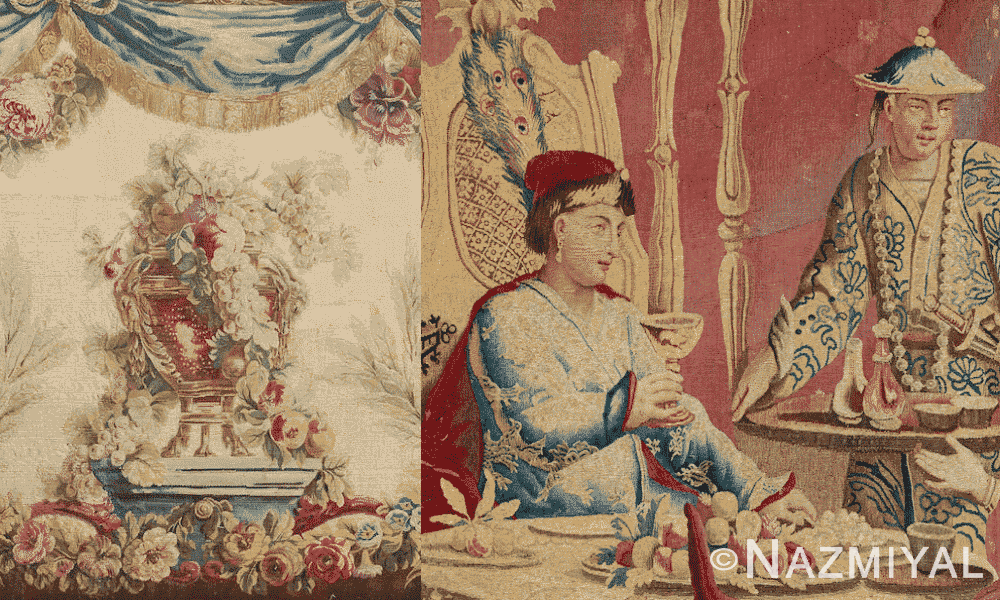
The Iconic and Breathtaking French Beauvais Tapestries
Beauvais Tapestries are highly regarded for their artistic quality and craftsmanship. They have been sought after by collectors and art enthusiasts for centuries and can be found in prestigious museums and private collections worldwide. Today, the Beauvais Tapestry Manufactory continues to produce exceptional tapestries, preserving the tradition and heritage of this renowned French tapestry workshop.
The Founding and Early Years Of The Beauvais Tapestry Manufactory
In 1664, Jean-Baptiste Colbert was the finance minister of France. He was looking for a way to promote the French industry, and so that year he founded the Beauvais tapestry manufactory. Although established by Colbert, the manufactory was a private enterprise. While the similar Gobelin manufactory crafted tapestries for France for royalty, palaces, and ambassadorial gifts, the Beauvais manufactory remained private. Over the years, it was run by many different entrepreneurs.

Louis Hinart’s floral tapestry design.
The first entrepreneur to head the Beauvais manufactory was Louis Hinart. He was known for and developed the notoriety of his floral, foliate, and landscape tapestries. After his arrest in 1684 (he failed to pay his debts), the manufactory was taken over by Philippe Beghale, under whose management the workshop took off with success. Beghale was an experienced tapestry manufacturer and merchant from the nearby town of Oudenarde, with work experience in the traditional tapestry weaving center city of Tournai.
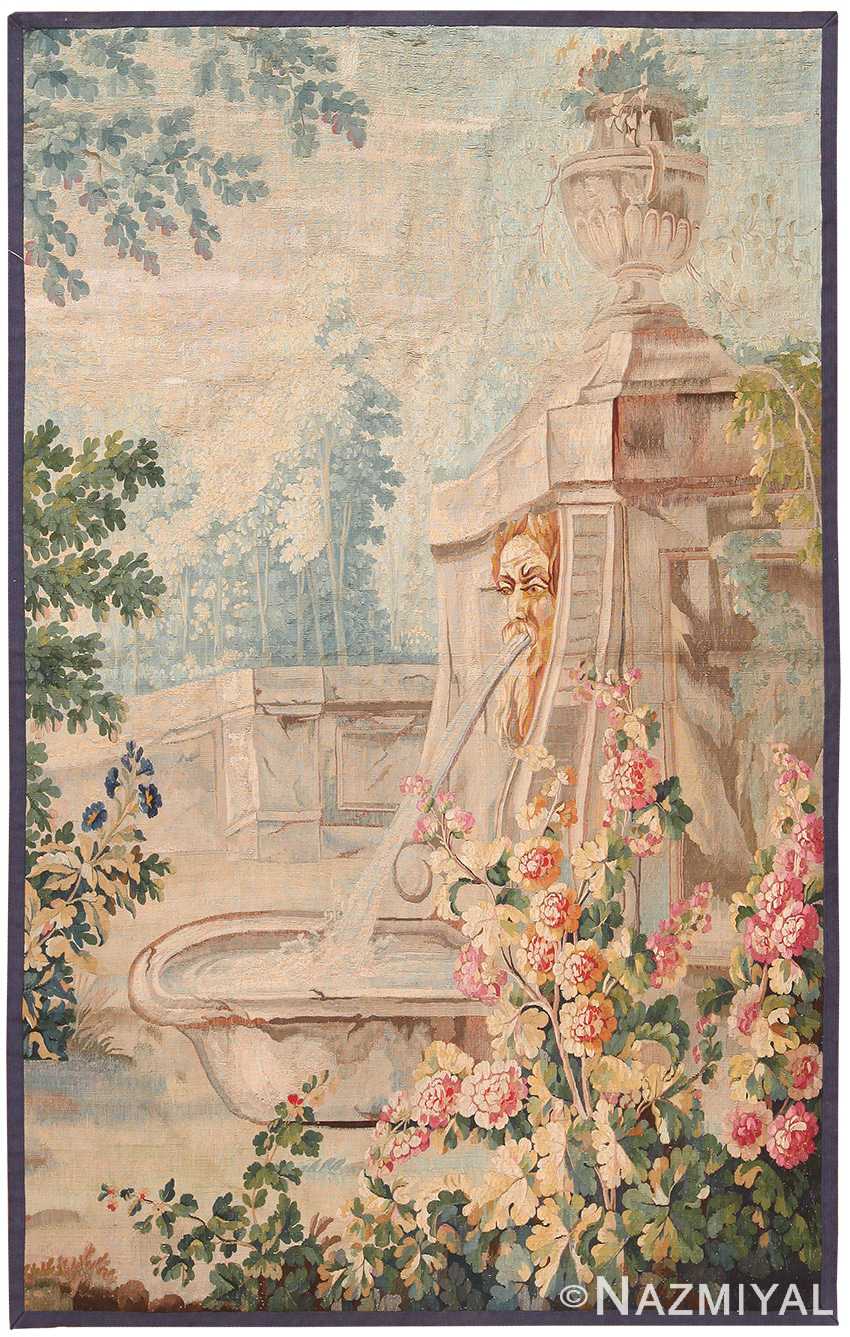
18th Century Antique French Beauvais Tapestry #70734 (sold)
While at the Beauvais manufactory, he created many well-known works. He was inspired by the Gobelin tapestries, as well as the cartoon paintings of the painter Raphael, and engravings of artist Jean Bérain. While in Beauvais, he created his most well known work, the series of Grotesques.
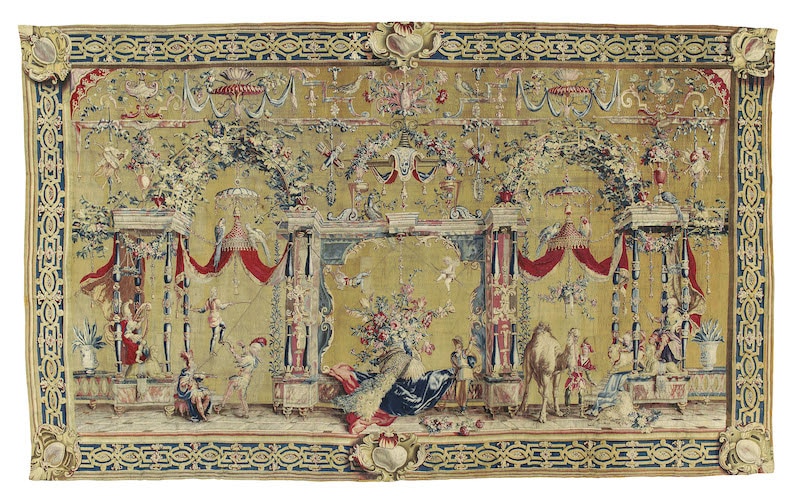
One of the Grotesques tapestries, created after designs by Jean Baptiste Monnoyer.
After Beghale moved to Paris, where he continued creating tapestries until the end of his life, he passed away and the manufactory was passed to his wife and son. By 1711, they had sold the manufactory to the Filleul brothers. Under their ownership, the Beauvais manufactory produced tapestries based on Greek mythology and Roman poetry, as well as a series of “Chinese” wall hangings. These Chinese style wall hangings are notorious in the history of chinoiserie design.
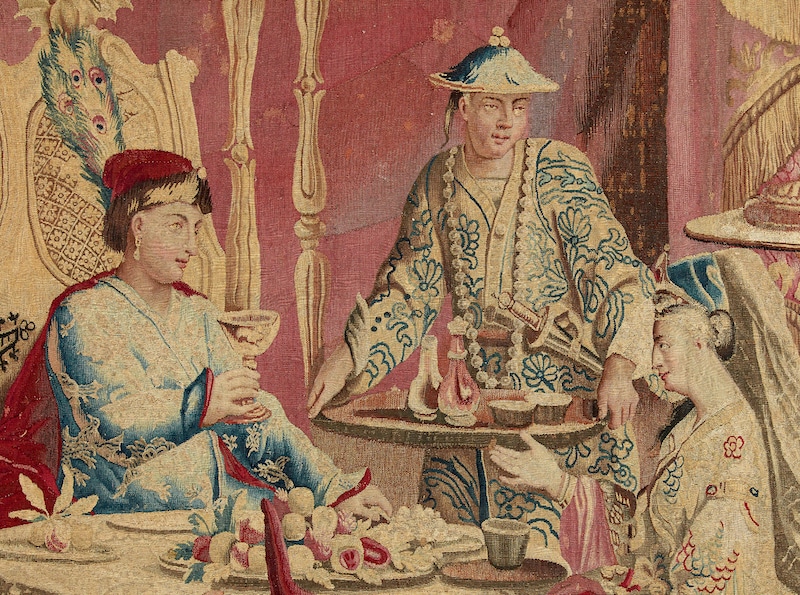
A Beauvais chinoiserie tapestry from the ´Histoire de l’Empereur de Chine’ (Story of the Chinese Emperor) series.
The Height of the Beauvais Tapestries
The Beauvais tapestries, however, are said to have reached their highest point when Jean-Baptiste Oudry replaced the most recent owner, Jacques Duplessis, in 1726. Jean-Baptiste Oudry was considered one of the greatest animal painters of the 18th century. At the same time that he took over making the Beauvais tapestries, he was also the inspector of works at the Gobelin manufactory. This was the first time the Beauvais manufactory was run by an artist rather than just a businessperson. Although Oudry was financially backed by Nicolas Besnier, Besnier did not make any of the creative decisions in the business or interfere with the artistic production. During Oudry’s time as head of the manufactory, he also notably made lots of productive changes to the company. He revamped the training system for the new workers at the factory, renewed designs, and created new, innovative designs. He also introduced the immensely popular tapestry covers for furniture.
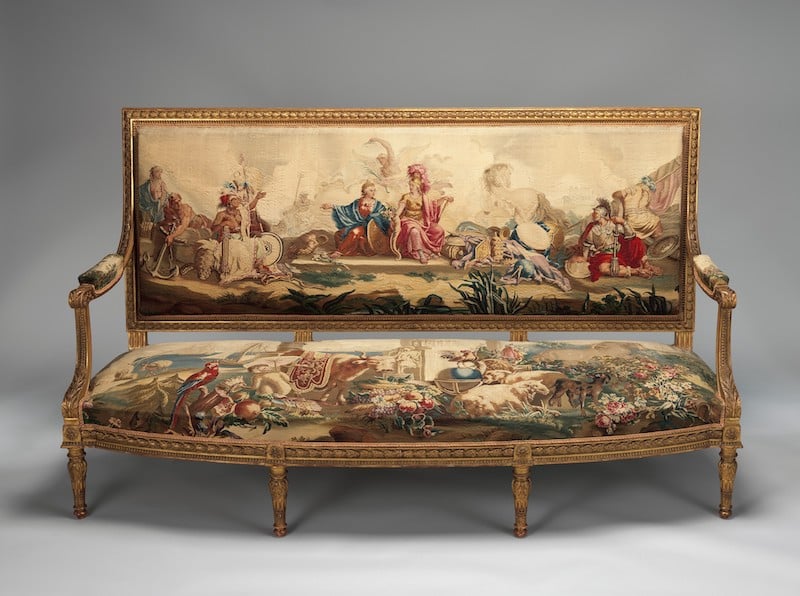
A tapestry-upholstered bench seat from Beauvais; this one is currently on display at the Met Museum.
Even the king of France, Louis XIV himself was mesmerized by the furniture tapestry covers. Even though the Gobelin manufactory specifically made any tapestries the king wanted, the king decided he would purchase two sets of these tapestries every year to use as foreign gifts. This was a huge testament to the quality of the works produced at Beauvais, as well as a boost to the manufactory’s notoriety and popularity.
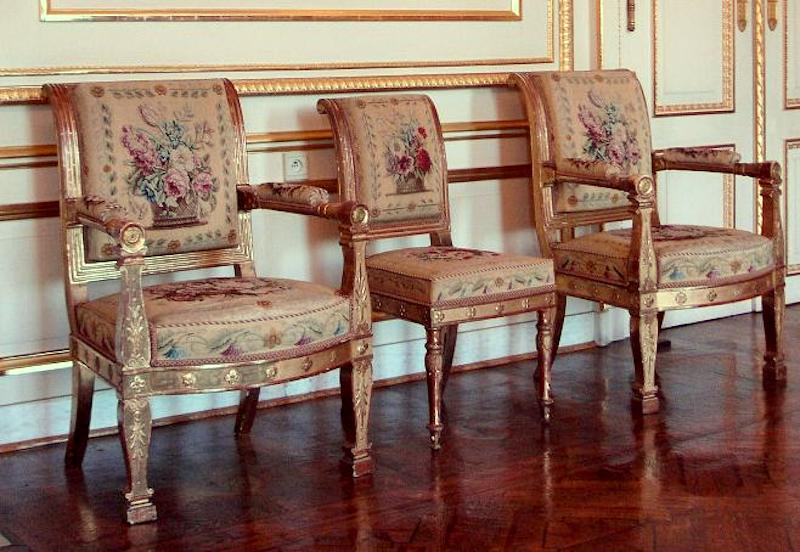
A set of Beauvais tapestry upholstered seats, given by King Louis Phillipe I of France to his daughter for her wedding in 1832.
The manufactory continued throughout the eighteenth century under Oudry, and he took on a partner, Francois Boucher. (The familiar “Boucher-Beauvais” tapestries are those rococo suites designed by him). They worked together successfully, taking on even more help and more royal support. Unfortunately, the Beauvais manufactory’s decline began with Oudry’s death in April of 1755. Furthermore, that same year, Boucher defected to the Gobelin manufactory. Without their leadership, the manufactory simply recycled old designs, ever declining in quality, until the French Revolution. During this war time there was animosity between the company’s administration and the weavers themselves, until the factory eventually shut down completely. Eventually, it reopened under State direction, now making only upholstery covers. The quality continued to deteriorate into the 19th century, and production declined.
The Legacy of Beauvais Tapestries
Although the Beauvais manufactory eventually came to an end, as everything must, it was iconic during its time and still is to this day. From the iconic, original designs to the pioneering of furniture tapestry covers, Beauvais was known for innovation and quality.
Here are some tapestries from the Nazmiyal Collection to inspire you:
Learn about: Learn How To Hang A Tapestry Or Rug On The Wall | Historical Biblical Tapestries | What Are Historical Tapestries? | Gobelin Tapestry History| Kesi: The History of the Chinese Tapestry | History of the Bayeux Tapestry | William Baumgarten & The Aubusson Tapestries | Barberini Tapestries Reborn from the Ashes | Green Tapestries Vogue 2017 Home Decor | Alighiero Boetti Tapestries | What Are The Unicorn Tapestries?
This art blog about the Beauvais Tapestries was published by Nazmiyal Antique Rugs.

